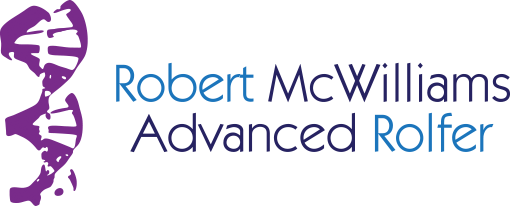As Rolfers do, I’ve been reading up on research lately. The idea is to find ideas and data that can help me be a better clinician. Of late, I had the opportunity to work my way through “Movement, Stability and Lumbo-pelvic Pain: Integration of Research and Therapy, 2nd edition” edited by Andry Vleeming, Vert Mooney and Rob Stoeckart. This is a compendium of articles attempting to understand the scientific bases of lumbo-pelvic pain, and to establish evidence-based methods of diagnosis and treatment.The book is aimed at Orthopedists, “Physiotherapists” (Physical Therapists, as termed in the US), Osteopaths and Chiropractors.The language is scientistic, and the world-view is decidedly biomechanical. This is a work that doesn’t have space to mention any cultural or psychological influences on pelvic pain! On the other hand, there are many interesting discussions of the healthy function of the Sacroiliac Joint, as well as it’s pathology. In this investigation, a lot of emphasis is placed on soft-tissue stabilizing structures of ligament, tendon, muscle and fascial connections. The concept of force and form closure is investigated, as is the evolution of the SIJ over millions of years, based on fossil research.Lumbo-pelvic pain, in a nutshell, is seen as a result of a lack of stability across the joints of the area.Exercises are suggested to add tone to weakened areas, primarily the Transverse Abdominus, Multifidi, Gluteals, Hamstrings and secondarily ranging from Obliquus Internus and Externus to Latissimus Dorsi and Quadriceps. Along with stability, the idea of a balance of forces is presented. In other words, some times the Gluteals grab and “splint” in response to a lack of stability in the lower back or at the Sacrum, and what is needed for relief and improved function is more “stiffness” and support from the deeper spinal muscles (mostly the Multifidi).As a life-long dancer, I really like the idea of helping someone mobilize an area, rather than just “taking the knots out”, as most people conceive of soft-tissue manipulation like Rolfing®. At the same time, there is something very two-dimensional about this view of human movement and resolution of pain. Just as it can be empowering to recognize the connections between humans and the rest of the animal kingdom structurally, there are limitations to this kind of approach that can’t be transcended. For example, a posture is pictured that “strengthens the Transverse Abdominal Muscle” Well, it can, but it probably won’t without proper coaching by a skilled hands-on practitioner who is able to offer imagery and cues that work for that particular client.My reaction to the articles was often: why does the scientific community need to plow through such outmoded body and movement paradigms? Fluidity is also empowering! I won’t bother the reader waxing on about the power of water, etc. The point is that some modalities may overemphasize looseness and laxity in tissue, where others are focused on rigidity and stiffness as the solution.Certified Rolfers look for the imbalances across important junctures in the body that may be triggering painful spasms elsewhere as part of their overall “body reading.” We also are taught to key into the client’s perceptual preferences, and try to get them to feel how these influence daily movement choices that continue to sculpt their form in space/time. For this reason Rolfing® is considered a wholistic, “3rd Paradigm” modality, in contrast to the work of “1st Paradigm” Massage Therapists, who focus on systemic relaxation (very helpful, certainly) or “2nd Paradigm” Physical Therapists, who are more symptom-focused. These last seem to primarily use a very direct therapeutic approach: exercise this muscle group to stiffen/strengthen that support, etc.It reminds me of the difference between a bodybuilder and a talented athlete. Michael Jordan was more often compared to a cat than a block of concrete. Shaquille O’Neil has the nickname “Diesel”, but there are many large men who have his brute strength but nowhere near the fluidity, savvy and skill he could muster in his prime!The information contained in “Movement, Stability and Lumbo-pelvic Pain; Integration of Research and Therapy, 2nd edition” can be very helpful, then, to wholistic practitioners as well as PT’s and the like. It gives useful new data to help frame the question: is my approach giving the body system space and fluidity sufficient for them to naturally create the stability they need for pain free and optimal functioning? Are there specific exercises I can give them to assist this process?This research and self-questioning can be very well integrated into a wholistic approach, even if it seems difficult for the scientist to look at this the other way around. Movement models that consider the mind/body connection need to be included and better understood in an “evidence-based” discussion of the human structure. Examples of truly optimum human motion contain elements of grace and fluidity more reminiscent of Jordan, Isadora Duncan, Bruce Lee and Mikhail Baryshnikov and less like the semi-paralyzed monsters towing fire engines with their teeth in a world’s “strongest man” competition.
